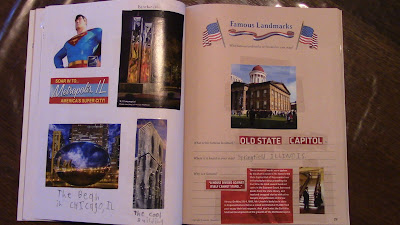 For Science this year, we focused on Earth Science by using a mix of curricula from different sources.
For Science this year, we focused on Earth Science by using a mix of curricula from different sources.- First, we used a curriculum pack from MASTER BOOKS titled A Survey of Geology and Archaeology. This is geared for grades 7-12 and covers a general overview of basic Archaeology, Geology, Caves, and Fossils. The package includes 4 thin books on each topic, as well as a teacher's guide that includes the weekly lesson schedule, glossary of terms, student worksheets, quizzes & tests, and all the answer keys. It is a thorough program, and interesting. However, my son got bogged down with all the reading; and the worksheets were difficult for him. He made it through all of the Archaeology book, all of Geology, and a portion of the Cave book. Then, we switched to a more visual approach to finish up the rest of the school year.
- I already owned 3 of the episodes from Master Books' Awesome Science: Historical Geology series with Noah Justice (along with the included study guides), so we took our time going through each of these DVD's and discussing them. I did not have the teacher's manual, so I did not have the answers to the questions in each of the study guides, but we did the best we could with answering them. They were at least helpful with guiding our discussion on each topic. These are the episodes we used:

- Ep. 4: Explore Yosemite & Zion National Parks
- Ep. 5: Explore Mount St. Helens
- Ep. 6: Explore John Day Fossil Beds
- The final option we used was 12 video sessions we found on You Tube from GEOLOGY KITCHEN. When JJ finished these, I had him choose one of his favorite episodes and write a short report about it.
One more thing we did recently isn't really related to Earth Science, but is more of a General Science experiment. We did the microwaved Ivory soap experiment. Ivory soap is very light and floats on top of water, unlike other bars of soap because, when it is made, air is whipped into the soap before it sets. Those air bubbles contain water molecules, which expand when the soap is microwaved. It turns the soap into a cloud or cotton-like texture. Here is a short video of what we did...



















